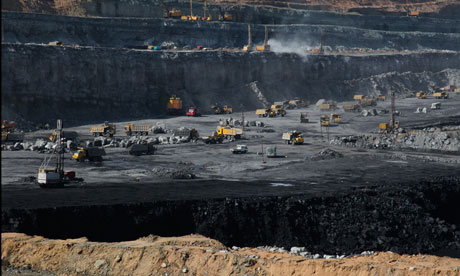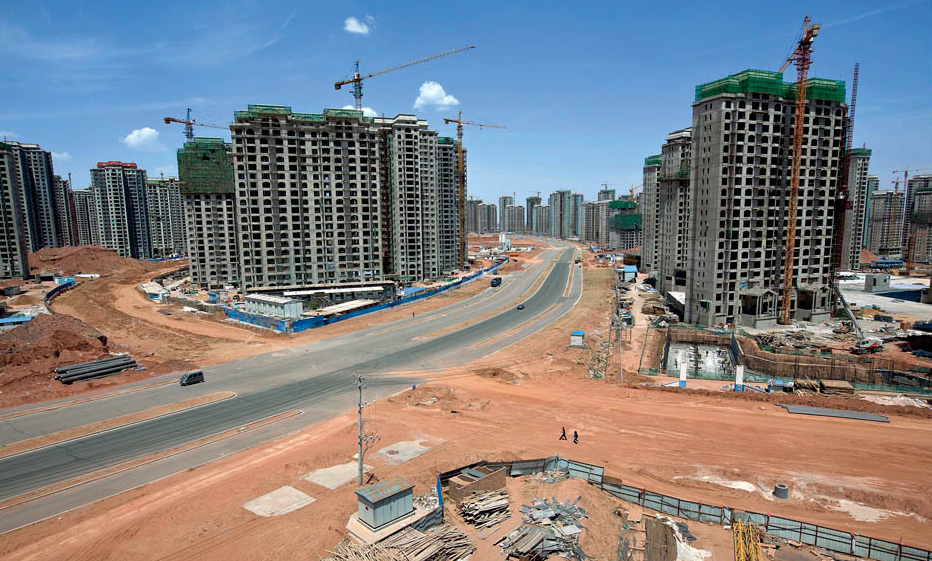The city of Ordos (pronounced È’ěrduōsī ) is a prefecture-level city located about 200 miles West of Beijing in southern Inner Mongolia. While not a traditional Chinese name, the word “Ordos” traces its origins to the Mongolians, translating to palaces in Mongolian. The urban area itself is relatively small, as while the county of Ordos may be rich in natural resources, government projects to draw migrants to the relatively new city have been largely unsuccessful. As a result of this, Ordos is known for being a “ghost city,” with thousands of towering apartments and housing projects going completely uninhabited.
Economy
 The economy of Ordos city, along with the whole of Ordos county, revolves around the coal mining industry. As a result of the area sitting on top of China’s largest coal reserves, in 2011 Ordos had a nominal per-capita GDP of roughly $18,287 (109,727元) ranking it among one of the richest regions in China. In addition to coal, the city also has a prominent wool industry.
The economy of Ordos city, along with the whole of Ordos county, revolves around the coal mining industry. As a result of the area sitting on top of China’s largest coal reserves, in 2011 Ordos had a nominal per-capita GDP of roughly $18,287 (109,727元) ranking it among one of the richest regions in China. In addition to coal, the city also has a prominent wool industry.
Kangbashi New Area
 As the coal industry grew throughout the early 2000s, government officials initiated the construction of the Kangbashi New Area, an urban housing development intended to house up to 1,000,000 people.
As the coal industry grew throughout the early 2000s, government officials initiated the construction of the Kangbashi New Area, an urban housing development intended to house up to 1,000,000 people.
As of 2010, Kangbashi was home to only 28,000. A 2009 Al Jazeera report that shed international light on this massive urban failure caused real estate analysts to begin to seriously question the state of the Chinese housing market, initiating the discussion of a massive real estate bubble doomed to burst.
Sources:
One would think that a city with a large coal mining industry such as Ordos would be able to easily attract new residents and migrants to the city. What factors are preventing workers from migrating to this city?
Is there any positive that can be taken from something like this regarding the fears of Chinese growth in coming years? I understand that there is some serious working age population issues, but if there are many “ghost cities” with extreme growth and efficiency potential, I assume this could aid China in their continued efforts to boost their economy.
Has the gdp of the region been affected at all by the globe’s environmentally-inspired push away from coal energy? In the United States coal mining still has a market, which is seen through West Virginia’s more intrusive mining of the coal in their mountains, however the overall sentiment towards the energy source has turned negative in recent years due to the environmental impact the resource has on our planet.
I doubt Chinese culture carries the same negative connotations toward coal that American culture does, given how rampant pollution is in some of the larger cities. Perhaps other energy sources are cheaper and more efficient for China, but I wonder what factor(s) led to the downfall of Ordos City.
Coal as dirty – well, the dirt has never been in dispute – is a recent perception. I never had to handle coal, except what we’d sometimes get a barrel of it to burn in our fireplace as an alternative to wood, less messy, less smoke and odor, and longer burning. But the house I grew up in had a coal chute going into what was by then the woodworking shop in the basement. Shoveling the coal in and the ashes out was a standard household chore for boys of my parents’ generation.
Coal miners likely aren’t prosperous enough and numerous enough to themselves support a sizable city, on top of the already sizable old city of Ordos. If it’s not a rail center, or a natural (that is, historic) location of commerce, or a site of artificial demand (governmental or ecclesiastic functions), then where will the jobs come from? What we don’t know is whether the “original” city is filling up, so that even if the business center remains quiet, the “bedroom city” component will expand. A quick google search suggests the population is now up to 100,000. Still a long ways from plans, but enough to support some retail and service operations.